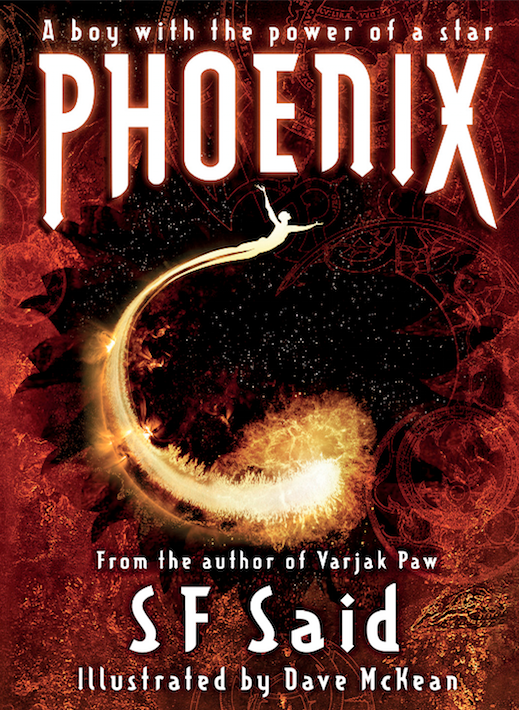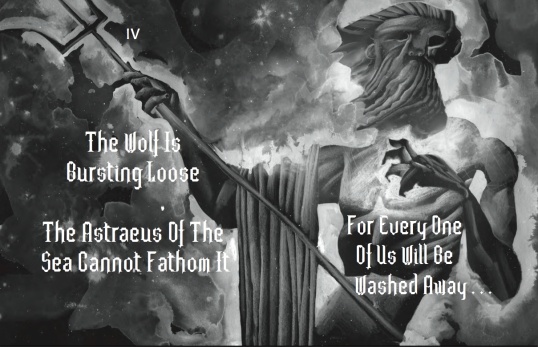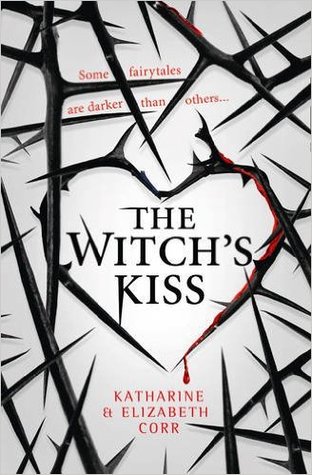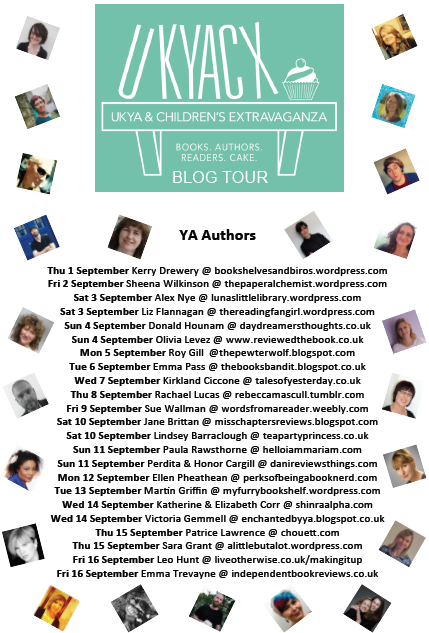This year, after the massive success of last year’s UKYA Extravaganza, is the very first EVER UKMG Extravaganza! For those of you who maybe don’t know, MG refers to Middle Grade fiction, more commonly in the UK known as 9-12, but it can straddle the line into Teen Fiction too, so more the 11-14 bracket in many cases. The UK has a wonderful history of books for this age – maybe even the best of all time, Harry Potter, and much like the UKYA community has picked up momentum in the last few years, the UKMG movement is just starting up right now online and through small events. For this blog tour, I’ve been locked in a steel cage deep underwater with SF Said, author of two Varjak Paw novels, as well as the Superhero-esque Phoenix. (Watch the book trailer HERE)

Bonjour, Hola, Konichiwa and welcome! Thanks ever so much for coming and letting me fire off questions at you with all the intensity of a million stars. Why don’t you tell us a bit about your books?
Thank you! I’m looking forward to questions with all the intensity of stars, because Phoenix is all about the stars!

The main characters in Phoenix are a human boy who has the power of a star inside him, and an alien girl who is the most brilliant fighter in the galaxy. It begins with the boy dreaming that the stars are singing to him, and it ends with the two of them facing the end of all worlds. So it’s a great big space epic, on the scale of something like Star Wars.

The Varjak Paw books are built on a smaller scale, but I think they also have a superheroic element. They’re about a cat wants to become a great warrior. In his dreams, he learns a secret martial art known only to cats. And this helps him to survive on his own in a dark and dangerous city.
What made you first start to write books for younger readers? Was that something you actively went for?
I always knew I wanted to be some kind of writer, but I never found literary fiction very satisfying. Then at university, I read and re-read lots of books for young readers, like Ursula Le Guin’s Earthsea novels, and the mythic stories written by Alan Garner and Susan Cooper.
These were exactly the kinds of books I wanted to write: hugely powerful page-turning stories with brilliant characters, richly-imagined worlds, and big questions about life and how it should be lived. Books with a lot of depth and levels, which could be read at different ages in different ways. Modern myths, really. So that was what I set out to write.

Varjak Paw is such a phenomenal character! Where did you dream up this idea of a martial artist cat?
Thank you! I have to admit, Varjak Paw didn’t begin with the idea of a cat doing martial arts. It began with me watching my own cat as he went outside for the first time, as a kitten. I started to write a story about a kitten going out on his own into a dangerous city. What was he going to need, to survive? The idea of a martial arts for cats evolved from there.
This martial art is called the Way of Jalal. There are seven skills: skills for hunting, skills for fighting, skills for stealth, and so on. They have names like Shadow-Walking, Slow-Time, and Moving Circles. They developed as the story developed, in response to the story’s needs. Story generally drives everything in my books.

How was working with the massively talented Dave McKean? Did you have ideas for his illustrations in the book, or was it all his own work based on your words?
Dave McKean is one of my heroes, and has been ever since I read the comics he made in the 1990s. So on Varjak Paw, I was a bit in awe of him, and couldn’t quite believe he was working on my story. I just gave him the text, and it came back looking like it does in the finished book. All the incredible things he does – not just with pictures, but with design, typography, even the use of white space – all came from him.

While I was writing Phoenix, though, we were having all sorts of adventures in Hollywood, trying to make a Varjak Paw movie. (Which still hasn’t happened, but if anyone out there has $15 million to spare, we can find a good use for it!) Anyway, we became friends and collaborators while doing this, so the process of making Phoenix was different.
This time I gave him all sorts of stuff to work with. Everything from space photography made by the Hubble Telescope, because Phoenix is set in space, to images of gods and goddesses, because the story makes connections between astral science and ancient myth. He told me later that the most useful thing I gave him was a CD of Sigur Ros music. I thought it sounded like the stars singing, and I told him if he could make illustrations that looked like the music sounded, they’d be perfect. Incredibly, he did – and they are!

Phoenix is a bit of a change, and a bit of an older piece of fiction, where did that stem from?
I don’t think about ages when I write. I like the idea of books for everyone: stories that anyone can enjoy, whoever they are, however old they are, whatever gender they are. I’m aiming to write modern myths, as I say, and I think myths are ageless and timeless. They transcend all categories.
But I was definitely setting out to do something bigger and more ambitious with Phoenix; I wanted to take a step up in my writing. Because the story is all about the stars, the scale had to be huge. So it ended up three times the length of Varjak Paw.
That might make people think it’s older. But I’ve met 9 year olds who read Phoenix in a day, and teenagers who’ve done the same. It’s a big story, but I hope it’s a page-turning, thrilling story too.
Was it a challenge to create this alien universe to try and work within, or was it all fully formed in your brain tank?
It was a huge challenge, and it took me a long time! It took seven years to get Phoenix as good as I possibly could, which is always my aim with each book.
The hardest part was the mythic background to the story. The aliens in Phoenix believe that all the mythological gods and goddesses are really stars who come down from the sky. They take different forms in different times, but they’re always the same immortal beings, returning again and again through history. They call them the Twelve Astraeus.

Originally, I wrote lots of material about the Twelve Astraeus, to explain this background. But it was impossible to write prose powerful enough to describe them. After all, gods and stars should be mysterious and awe-inspiring beyond words! Then I decided to describe them through illustrations. I gave Dave a list of the Twelve Astraeus, with their names and attributes in different mythologies (Greek, Roman, Norse, Egyptian, Mesopotamian etc.) The images he created have exactly the sense of mystery and awe that I wanted.
I also wrote song fragments to go with the pictures, which give you hints about them. So when readers encounter the Astraeus Of The Sea, for example, they can work out for themselves that this is the being who’s been called Poseidon, Neptune, and so on. Even if they don’t, they’ll feel who he is, without being told. I find that much more powerful and evocative than ordinary prose – but it took me a long time to work out the best way to do it!

How do you decide what things you can tackle in MG, and what’s best left for the YA sphere?
I’m probably not the best person to ask, because as I say, I don’t think about ages. I just try to write books that everyone can read.
I personally don’t see a vast difference between different categories of fiction. A great story is a great story. I read across all categories myself, and did when I was a kid. As soon as I could read on my own, I wanted to read EVERYTHING. And so now as a writer, I put everything I care about and everything I love into my books. And anyone who wants to read them is welcome.
Why is MG such an important age bracket of young readers? Why do you think it’s such a vital part of a child’s reading evolution?
I think the books we read when we’re young shape us and stay with us forever. So while I’m not a big fan of categories, I do think those books are the most important books of all.

Watership Down is a book that changed my life. I read it when I was 8, and thought it was the best book I’d ever read. I remember thinking that one day, I wanted to try and write something even half as good as it. I re-read it when I was 35, and I thought it was even better! At 8, I’d seen a thrilling adventure story about rabbits; now I saw politics, philosophy, mythology, all working together on different levels.
It was amazing to realise how deeply it had shaped my own imagination. I can see the roots of everything I want to do as a writer in that book. So it changed my life, and I think most of us have had similar experiences in childhood. What could be more important than that?!
For the love of all that is pure, WHAT ARE YOU WRITING NEXT?!
I’m writing a book called TYGER. I can’t say too much about it, as my books always change a lot as I work on them. But I can tell you that it’s partly inspired by William Blake’s amazing poem The Tyger!

If they made a film of any of your books, would you try and cast yourself in them?
Good heavens, no! I don’t even have pictures of myself on my books. I’d rather people engaged with the story without the writer getting in the way.
Tell us about your ideal writing environment. Is writing a full time deal for you?
Writing is very much a full time deal for me. I write in my local library. There are no distractions there, and everyone else is working, so I just get down to work. If I try to write at home, the temptation to look at the internet is just too big. Especially Twitter. I can always justify it as ‘research’. But if you really want to write, you need to immerse yourself in writing, and not do anything else.
Have you always wanted to write?
Yes. I’ve always loved books and stories, and I’ve always wanted to make my own.
What does the UKMG community mean to you? Is it exciting to be there to watch it as it takes its tiny first baby steps?
I think it’s a wonderful thing. I’m so excited about UKMG Extravaganza, and I would be even if I wasn’t taking part! When I started out, being a children’s writer was quite a solitary thing. Sometimes I’d meet other writers at publishing events, but that was about it. In everyday life, I didn’t meet many other people who loved children’s books or even took them seriously.
Now, I’m in constant conversation with them. I love the fact that people who love children’s books are talking to each other in events like UKMG Extravaganza, and on places like Twitter, through hashtag chats like #ukmgchat. And this isn’t just writers, but readers, bloggers, vloggers, booksellers, librarians, teachers – there’s no end to it. It’s brilliant being connected to such a thing, because it makes you feel like you’re not alone. There are thousands of other people who love books just as much as you do!
What UKMG authors make you happy? Who’s books should we all be rushing out to grab from shelves right this second?
So many! In terms of classics, I love Rudyard Kipling, E Nesbit, CS Lewis, Rosemary Sutcliffe, Alan Garner, Susan Cooper…
More recently, I’d have to mention Philip Pullman’s His Dark Materials, JK Rowling’s Harry Potter, Peter Dickinson’s The Kin – an epic sequence about human origins that I think deserves to be as well known as widely read as Michelle Paver’s Outcast books – which I also love! I think Jonathan Stroud is a fantastic writer. Francesca Simon’s The Lost Gods and Kate Saunders’s Five Children On The Western Front are two books that I think of as classics already. I could go on. And on…

What books did you read growing up that inspired you as a writer and as a reader and as a human being?
Ursula Le Guin’s books inspire me in every possible way. The Earthsea books showed me that children’s literature could be great literature. The Dispossessed became a key book for me; I still re-read it every few years. Its portrayal of a society built on anarchist principles inspires me, as does its depiction of relationships built on equality. So it doesn’t just inspire me as a writer; it’s a book I aspire to live by.

Do you get much fan mail? What’s your best response you’ve had from one of your readers?
I love hearing from readers. I’m a lot better at replying to comments on my website than I am to actual letters, for some reason. But any time anyone tells me that one of my books meant something to them – that’s amazing.
When I hear from people who say they didn’t like books before, but then they read one of mine and now they can’t stop reading – that’s just mind-blowing.
And when I hear from people who read one of my books as a child, kept it through their whole childhood, and now still enjoy it as adults – well, I don’t have words for that.
One of the nice things about MG is how engaging and excitable children are at that age – do you get out to many events with kids? Is that something you enjoy getting involved in?
I visit a lot of schools; about one a week on average at the moment. I visit both primaries and secondaries. I do enjoy it – it’s always good to meet readers, and see what they’re interested in. I always ask for book recommendations, and have found some great reads that way.
What would your Patronus be?
A librarian?
If they made an SF Said action figure, what accessories would it come with?
Portable tea mug to take to the library. Vellum paper and fountain pen with Havana ink for first draft. Laptop and printer for subsequent drafts. Headphones and iPod for all-important writing music. (The Cure for Varjak Paw; Sigur Ros for Phoenix; Godspeed You Black Emperor for Tyger!)
If you could be ANY mythical creature, what would you want to be?
A writer who can write a great book in just one go. Because that is a TOTALLY mythical creature!
Would you rather fight one-hundred duck sized horses or one horse sized duck?
I like the idea of tiny horses. I would want to be friends with them. Whereas I find the idea of a horse sized duck a bit threatening. That’s a very big duck.
What’s on your To-Be-Read pile?
There isn’t a To-Be-Read pile. There’s a To-Be-Read mountain. There are so many books I need to read, and I’m a slow reader, so realistically, I know I’m never going to read them all. I could never even list them all!
But some books currently in the mountain were written by other authors taking part in UKMG Extravaganza: Allan Buroughs’s Ironheart, Emma Carroll’s In Darkling Wood, Jo Cotterill’s Looking At The Stars, Abi Elphinstone’s The Dreamsnatcher, Candy Gourlay’s Shine, Julia Lee’s The Mysterious Misadventures Of Clemency Wrigglesworth, Helen Peters’s The Farm Beneath The Water, and many many more!
Thanks for being on the blog SF Said! Don’t forget to check out the #ukmgchat for more great recommendations and discussions about Children’s Literature.
And thanks for reading,
D














